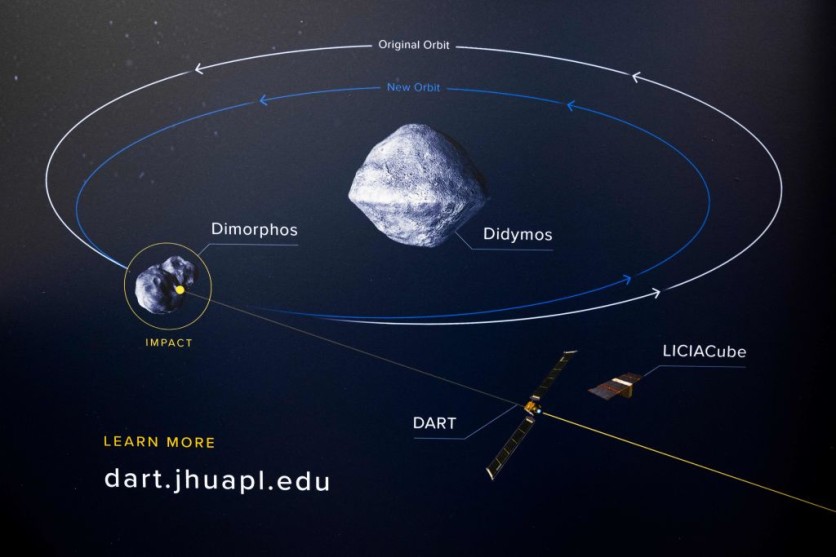NASA's Double Asteroid Redirection Test (DART) mission successfully smashed into asteroid moonlet Dimorphos on Sept. 26. However, the epic mission did not end there.
The European Space Agency's (ESA) Hera mission will reach the binary asteroid system Didymos, more than four years after NASA's DART probe struck one of the system's two space rocks, as reported first by Space.com.

Examining the Didymos Pair
The Didymos pair will become the most extensively examined space rocks in the universe by the time all the dust produced by the experimental collision has settled. Hera will be joined with two cubesats to make this exploration possible.
Hera or its predecessor AIM (Asteroid Impact Mission) were originally supposed to arrive at Didymos before NASA's DART.
Hera was intended to witness the historical experiment, which was created to confirm the "kinetic impact" technology that someday might protect Earth from a catastrophic asteroid impact. Hera was even outfitted with a complex set of cameras and sensors to observe the epic collision.
However, the $280 million Hera was unable to fulfill that job due to ESA's approval delays and a late financing decision. Hence, the tiny LICIACube cubesat, developed in Italy, stepped in to take Hera's responsibility.
According to experts, Hera has a lot to offer, even when it arrives at Didymos in late 2026 after its planned launch in 2024. In fact, they contend, the study wouldn't be complete, and there would still be a lot of unanswered questions without Hera's measurements.
Telescopes Keep an Eye on Didymos
To ascertain how much the DART hit changed the orbit of the 0.5-mile-wide (780 meters) Didymos around the 534-foot-wide (160 meters) Dimorphos, hundreds of ground-based telescopes are now watching the Didymos system.
NASA's two most powerful space telescopes, James Webb and Hubble, are also keeping a close eye on the system.
Images of the collision and its aftermath were already available from the tiny LICIACube, but they were shot from a great distance. In the first few minutes following the DART impact, LICIACube conducted a close flyby of Dimorphos before completing its intended science mission.
In the following weeks, the cubesat might be able to perform more tasks, but with only two rather simple cameras, it will face some limitations, according to Space.com.
Hera will be equipped with a lidar ("light detection and ranging") sensor to precisely scan the surfaces of the two asteroids, a thermal camera to examine the surface's chemical composition, and an optical camera that will allow researchers to see the final impact crater and the unaltered Didymos.
Two cubesats named Juventas and Milani and other cutting-edge instruments will support Hera on its upcoming mission.
Related Article : Protecting Earth From Asteroids: Will NASA DART Spacecraft be Efficient? Global Cooperating Still Needed
This article is owned by Tech Times
Written by Joaquin Victor Tacla
ⓒ 2025 TECHTIMES.com All rights reserved. Do not reproduce without permission.




